A Night of Scotch with Norm Brodsky (by David Bender)
EDITORS NOTE
VACEOs member David Bender met Norm Brodsky during the 2014 VACEO Annual Retreat. A lifelong entrepreneur, Brodsky has launched several successful businesses in his lifetime, including a three-time Inc. 500 company. In 1995, he began writing the enormously popular Inc. Magazine column “Street Smarts.” When he’s not starting new businesses or making new fortunes, he spends his time mentoring other entrepreneurs and attending speaking engagements, and he often appears on MSNBC.
During the 2014 VACEO Retreat, Norm held a Q&A breakout session in which he and his wife offered straightforward advice about financial strategy and employee management. Norm hosts an exclusive Scotch Night for business professionals each year at his waterfront home in New York. During the Casino Night, he graciously gave one seat away as a door prize, which Jo Ann Rossi won, and put another seat up for auction. The bidding process for that seat could be compared to the frenzy found on the floor of the New York Stock Exchange. Imagine 100+ onlookers yelling and cheering at each other and at the two highly motivated members separated themselves from the pack. Standing on a chair to clearly express his commitment, David’s very LARGE bid was ultimately accepted by Norm, who in a turn, also accepted Preston Herrington’s matching bid, with all proceeds going to VACEOs. The room exploded with joy. A truly great moment for all.
We asked David if he would share his Scotch Night experience with the group. This is his story.
##
You Might Wonder Why
You might wonder, why did I bid thousands to join an annual Scotch Night event hosted at a beautiful home in Brooklyn?
Was it to see how the other half lives? No, I’ve had enough of that. I thought every car was German and had a name that started with a “B” until I was 9 years old.
Was it to hobnob with the rich, if not so famous? Did I have an image of an angel investor wanting to put his money behind my invention sitting on my office floor, wondering how my brilliance has gone untapped all this time? Or did I expect an offer of a seven-figure salary to head one of his companies? There was no such fantasy or delusion.
Perhaps standing on a chair, refusing to be beat at an auction in a roomful of my white-collar CEO friends and peers was a motivating factor. It was a thrilling auction, and fun to be in the middle of the excitement. But as much as I do like to win when I put my mind to it, recognition was not something I was seeking.
There was, in fact, only one motivating factor in my bidding for the seat. Standing nearby was my great friend Eric Sundberg. You see, every year, Eric goes on an extended vacation to China or Australia, or some other far-off place. He visits huge conventions and world’s fairs. He uses frequent flyer miles to fly first class. He opens himself up to the unknown. He’ll go bungee jumping, zip-lining, jet boating, flying in a fighter plane, or on some other unique adventure. You see, he knows you have to CREATE the opportunity for unique experiences if you are to HAVE unique experiences.
So with that in mind, I decided to bid on Norm Brodsky’s Scotch Night.
The Trip
Dinner was scheduled for 6:00 p.m. on a Tuesday after a tour of CitiStorage (Norm’s business) at 5:15 p.m. I drove to New York late Monday night and stayed at my friend’s apartment in Manhattan; he was out of town, which worked out perfectly. I got in about 2:00 a.m. and awoke a few hours later to a 16th story view overlooking the Hudson and downtown.
The weather was good for walking – cool and cloudy – and the rain held off all day. Wanting to take advantage of the experience, my day included pictures with Minnie Mouse and Johnny Depp (wax) in Times Square, a tour of Toys “R” Us, lunch at Kobeyaki (a fast food Japanese food concept of which Norm owns a piece), and a tour of a submarine and an aircraft carrier. I also circled the entire perimeter of Central Park in a futile search for hot peanuts!
Norm’s Place
The taxi pulled up to the CitiStorage warehouse at 5 N. 11th Street in Williamsburg, a neighborhood in Brooklyn across the river from Manhattan. The eight waterfront acres underneath CitiStorage, owned by the Brodskys, are now worth in the ballpark of $200 million. The new owners of CitiStorage (as of May 5) will be moving out soon, and you can be sure the Brodskys will be relocating shortly, as well.
Norm gave a tour of the CitiStorage facilities, including one warehouse that is home to over 4.5 million boxes. He explained the concept of the “termination charge,” which is commonplace in the storage industry: if a customer wants to get a box OUT of storage, they have to pay two years’ rent. This makes customers very sticky and the company actually fairly recession proof. He showed us how they developed the first bar code systems for the boxes and the files inside and told of the 3,000 movements of documents in and out of the facility each day. Paper and x-ray scanners are used to send requested files to customers – all in all, not a terribly fancy or complex operation on the surface.
An elevator took us to an office space belonging to Norm and Elaine, where I replaced an engraved piece of lathed pine hanging on the wall behind his desk with a new Louisville Slugger from the Council with the inscription “Norm Brodsky: Friend of the VACEOs.”
Norm (see, I call him “Norm”) told of how his lawn guy at his house in Telluride gave him the tip to buy real estate and put up an extended stay hotel in North Dakota to take advantage of the new oil boom. “Most money I’ve made,” is how Norm he described it. (By the way, the tip from the lawn guy was preceded with the question, “Is it true that if someone gives you a tip on a business then you cut them in for a piece of the profits?”)
Then it was up to his apartment overlooking the river – a spacious open loft layout with about 25 bottles of Scotch on a round table and glasses inscribed with “Norm and Rob’s Scotch Night” ( Rob Levin, publisher and founder of New York Enterprise Report, was the co-host of the event). It was only after I lamented leaving my souvenir glass the next day that I realized they were not, in fact, souvenirs, so it was good that I forgot mine.
There was about 15 minutes of mingling before Norm called everyone to order and the 17 or so guests circled around the table of Scotch for introductions. Other than a couple of clear regulars, invited guests ranged in age from late 20s to mid 50s. Each had a turn to puff their chest and brag about the companies they run, ran, bought and sold. So I listed all of mine, and included a mention of the invention sitting on my office floor. I think it went something a little like this: [gorilla grunting and chest-pounding].
It was an impressive rundown, to be sure. No heads of Top 1000 companies, but the gamut ran from the owner of a $250,000 dumpster business to a gentleman who had just sold his coal mine and was looking for his next project. There was duo from Michigan who run a marketing company in addition to four other companies, a lawyer with a (very) private equity firm, the head of a 200-employee test prep firm, and the owner of a private jet leasing company and several top-end meeting facilities. Also attending were an individual involved in political consulting and a director within the Inc. Business Owner’s Council.
The company was great, the conversations lively, the egos big and small (generally inversely proportionate to age, but not without exception), and plenty of advice was given and received (including one tip that certainly made the trip financially worthwhile). We had terrific Scotch and a delicious dinner, all overlooking the unfettered nighttime skyline of New York City. I finished off the night back at my friend’s apartment falling asleep to a “pre-Mark Cuban years” episode of Shark Tank.
There was one person with whom, to be sure, I made what I hope is a lifetime connection. We were able to talk almost non-stop and had a remarkable number of things in common, including:
· Owning businesses of similar size in terms of employees and production and customer service issues
· Wanting to find ways to create unique customer and employee experiences
· Possessing a genuine concern for the people in and around our business
· Having a father pass away from cancer as a teenager
· Having a spouse who didn’t understand why we wanted to go to this dinner.
We also talked about our young kids and shared a genuine enthusiasm for going on board a submarine and an aircraft carrier while visiting New York City. In case you haven’t figured it out, the most valuable thing I took from my trip to New York was a bond with my traveling companion, Jo Ann Rossi. I am grateful to the Council for giving me the opportunities it has to make connections with people such as Eric and Jo Ann, and that’s not something you need Scotch or prime rib to appreciate.
Virginia CEOs Report Economic Outlook in 2014 2nd Quarter Survey
Robins School of Business – Virginia Council of CEOs survey shows significance of talent gaps in small and mid-sized businesses.
Each quarter the Virginia Council of CEOs (VACEOs) and University of Richmond’s Robins School of Business partner to take the pulse of top executives in the region.
The survey results provided by Richard Coughlan, Senior Associate Dean at the Robins School of Business, provide a snap shot of the overall economic outlook index for various companies within the region and help central Virginia companies anticipate business decisions and plan for growth.
Overall, the Economic Outlook Index for the second quarter reflects slightly more optimism among CEOs compared to first quarter results. The higher score was driven largely by an increase in the percentage of firms expecting to grow the number of employees over the next six months, to 49.4% of firms from 44.6% a quarter ago.
Says Scot McRoberts, executive director of the Virginia Council of CEOs, “The CEOs I work with are very concerned with attracting talent in two areas. The first is sales. As business has become more competitive, many small business CEOs are raising the bar for their sales teams. The other challenge is with technical staffing. In our local IT community, programmers and coders are just not there in sufficient skill and quantity.”
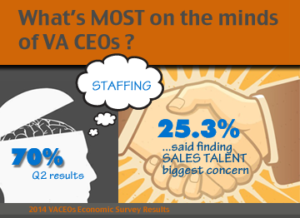 VA CEOs Survey Quantifies Talent and Revenue Gaps
VA CEOs Survey Quantifies Talent and Revenue Gaps
The second quarter 2014 CEO Economic Outlook survey by the University of Richmond’s Robins School of Business and the Virginia Council of CEOs highlights the challenges of finding and retaining talent, especially in sales, marketing and information technology.
Among the 87 chief executives of small and mid-sized companies participating in the survey this quarter, 70 percent said staffing is a significant issue. Finding, recruiting and retaining sales talent was identified as a significant challenge by 25.3% of CEOs. Operational talent was cited as a challenge by 16.1% of respondents, while 14.9% cited marketing talent. The other categories of talent noted as challenges by more than ten percent of respondents were engineering, information technology and general management.
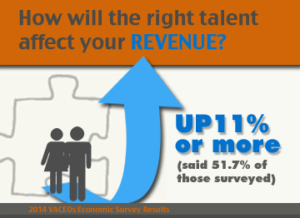 When asked how much their annual revenues might increase if their talent concerns were resolved, more than half of all CEOs (51.7%) indicated they would experience growth of 11% or more, with 17.2% of firms indicating potential revenue growth of more than 20% if they could solve their staffing issues.
When asked how much their annual revenues might increase if their talent concerns were resolved, more than half of all CEOs (51.7%) indicated they would experience growth of 11% or more, with 17.2% of firms indicating potential revenue growth of more than 20% if they could solve their staffing issues.
“Workforce development continues to be a key concern for these executives,” noted Richard Coughlan, senior associate dean of the Robins School. “For the first time, we collected data that allow us to quantify the very significant financial impact of talent gaps in their firms.”
Survey Results
The following survey results from the first and second quarters of 2014 show projections for the next six months for sales, spending and employment:
Economic Outlook Index
The results also provide an overall economic outlook index, which is based on businesses’ projected six-month sales, spending and employment figures.
Economic Outlook Index
About the 2013, Fourth Quarter Robins School of Business / VACEOs Economic Survey
The Virginia Council of CEOs and the Robins School jointly conduct the quarterly survey, which helps central Virginia companies anticipate business decisions and plan for growth. The Robins School adapted the survey from the Business Roundtable, an association of CEOs of American companies that conducts a similar survey nationally.
The council and the Robins School collected responses from 87 CEOs in central Virginia. The median annual revenue year-to-date for CEOs responding was $3.1 million. Multiple industries are represented in the sample (for example, construction, manufacturing, finance and insurance, and retail). The median employment of member companies for this survey was 20.
Request Results
The council continues to expand the survey beyond its members, offering any area business owners whose companies gross at least $1 million in annual revenue the opportunity to participate. If enough businesses participate, the council will provide survey results by industry. Participation is free, and all participants will receive copies of the survey data.
Business owners and CEOs who would like to participate in the next survey should contact Scot McRoberts at smcroberts@vaceos.org.
About the Virginia Council of CEOs
The Virginia Council of CEOs is a nonprofit organization, whose mission is to connect the CEOs of second-stage companies so they can learn from each other and grow their businesses. Learn more at www.vaceos.org.
About the Robins School of Business
The Robins School of Business is the only fully accredited, top-ranked undergraduate business school that also is part of a top-ranked liberal arts university. Bloomberg Businessweek ranks both the Robins School’s undergraduate and part-time MBA programs among the top 25 in the country in their respective categories. The school’s executive education division offers open enrollment courses and customized leadership development programs for individuals and businesses.
# # #
“All In” With Keynote Speaker Chester Elton
Wow! Can I hear an “Amen!”? I say, “Ah, yeah!”
Among professional speakers, Chester Elton could be considered a rock star. His corporate culture presentation at the Retreat this year, complete with sound bites, video clips and deeply personal stories, made us literally shout “Amen!”, laugh out loud, clamor for carrots, and, yes, shed a joyful tear or two.
Fitting. Didn’t the experience embody the exact culture we want for our businesses? A rockin’ roller coaster of a good time, where the congregation members are all on the same page and you are the Apostle of Appreciation?
Remember this quote from his presentation? “My role is to get my team members to fall in love with our company and their jobs, just like I have.” (Manager, Coffee Bean Company store)
To get there, you — the CEO — need to get everyone in the wheelbarrow. Your employees need to believe. And you need to be ALL IN.
How do you make that happen? Lucky for us, Chester has developed a road map: seven simple steps powered by the relatively simple acts of engaging, enabling and energizing employees.
He reminded us to focus on the customer and root for each other. He reminded us that the smallest amount of negativity is strong enough to crush the strongest of culture. And we saw how one hand-written note changed a life.
Chester Elton’s advice? Reward behaviors. Do it often and be specific.
Remember, your employees are watching, so work to inspire people. Be ALL IN and bring it home.
(This video has one last takeaway. VACEOs members enjoy outstanding speakers and events all year long. Are you a member? Learn why you should join the Virginia Council of CEOs.)

About Chester Elton
Called the “Apostle of Appreciation” by The Globe and Mail, Canada’s largest newspaper, and “creative and refreshing” by The New York Times, Chester Elton is co-author of several successful leadership books. All In, The Carrot Principle and The Orange Revolution are all New York Times and Wall Street Journal bestsellers. His work has been called a “must-read for modern managers” by former CNN television host Larry King.
Chester has inspired audiences from Seattle to Singapore, Denver to Dubai, and Toronto to Istanbul. He was the highest-rated speaker at a recent national Society for Human Resource Management annual conference (Bill Cosby was the second-highest-rated speaker).
Matt Blumberg, CEO of Return Path, on Creating Culture in the Workplace
This year’s VACEOs Annual Retreat program was chock full of outstanding speakers. After we were inspired by Rita Gunther McGrath’s “MarketBusting” session, we didn’t miss a beat and kept the energy flowing straight through lunch, where we asked Matt Blumberg, CEO of Return Path, Inc., about everything from fostering the right culture to choosing the right board members.
I saw heads nodding and a few “Aha!” expressions as I looked around the room while Matt spoke. And I couldn’t help but think that at least part of his success must be due to the fact that he regularly revisits his work-life checklist.
Several times a year, he asks himself:
1. Am I still learning?
2. Am I having fun?
3. Am I being adequately financially rewarded?
4. Am I having an impact?
If only two boxes are checked, he says it’s time to address the issue.
During lunch, I made note of several of Matt’s major points, including, “Culture is about being deliberate about it, and everyone plays by the rules.” And the biggie: “You, as CEO, must be ALL IN.” (I couldn’t help but love the way this message tied into our Retreat theme this year.)
I wonder, do you connect the dots between your vision and your employees’ daily jobs? Matt does — with frequent town hall events, scheduled meetings with his management team, and a weekly recognition and reward program.
Transparency, flexibility and learning are pillars of his company’s culture. Ask him about his “people team” and his internal training program and watch his eyes light up. Don’t like feedback? Don’t work for him. He’s passionate about performance reviews, so you can expect several each year. Yet another pulse check to keep him on track.
What are the pillars of your culture? As the CEO of your organization, do you embody the message — or shy away behind your desk and expense reports?
About Return Path, Inc., and Matt Blumberg, Chairman & CEO
Matt Blumberg founded Return Path in 1999. The company is now the global leader in email intelligence, helping businesses build better relationships with their customers and improve their email ROI. Return Path also assists ISPs and other mailbox providers enhance network performance and drive customer retention. Return Path has made the Inc. 500 list of America’s Fastest-Growing Small Companies multiple times and was listed as number 11 on Fortune’s “Best Companies to Work for” list in 2012.
Matt is the author of Startup CEO: A Field Guide to Scaling Up Your Business, based on his popular blog on entrepreneurship, Only Once. He is also co-author of Sign Me Up!: A Marketer’s Guide to Creating Email Newsletters that Build Relationships and Boost Sales. Among many other honors, Matt was an Ernst & Young Entrepreneur of the Year finalist in 2012.
MarketBusting with Rita Gunther McGrath
It’s not every day you get to hear one of the world’s top experts on strategy and innovation speak, but that’s exactly how we began our 2014 Annual Retreat. If you missed the event this year, you missed an incredible opportunity.
Rita Gunther McGrath, nationally known speaker and Columbia Business School professor, inspired us with examples of “MarketBusters” – strategic moves companies made that allowed them to capitalize on significant strategic growth opportunities.
Here are a few takeaways I gathered from her session. What lessons did you learn?
Eight Takeaways: Rita Gunther McGrath on “MarketBusting: Finding Opportunities in Surprising Places”
1. GET the big picture: Innovation and strategy are more integrated than ever. The new strategy playbook involves continuous reconfiguration of your business. Seek out disruption. Small changes can add up to big results!
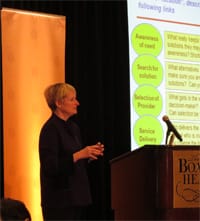
2. ASK, “How do I make sure I don’t stay in my existing model? How do I accumulate new ideas and get them into my business processes?”
3. AVOID defining yourself out of an opportunity (Q coin collection story). “We assumed that our customers would want this service for free. We categorized it as a cost to avoid.”
4. LOOK for new opportunities inside and outside of your marketplace. Start with reevaluating your customer segments. (Remember the elevator story?) Ask, “What do my customers really need? How are they solving problems? What other business spaces do I need to play in?”
5. KNOW your customers’ experience, know what EXCITES or enrages them or keeps them up at night, and then FIND the next beverage cup holder or aircraft brake shoe!
6. CONSIDER how you’ll retain and reward your employees. Employees of the future are moving away from wanting a stable career path to pursuing a “series of gigs.”
7. REMEMBER, your people are watching. As CEO, your actions signal to your people what is important and how they should channel their energy.
8. MAINTAIN your discovery-driven mindset. Think about how a change in one or more industries could dramatically impact your business, like it did for the shipping company Rita told us about. Above all, make time for thinking space!
About Rita Gunther McGrath
Rita Gunther McGrath is regarded as one of the world’s top experts on strategy and innovation, with a particular emphasis on developing sound strategies in uncertain and volatile environments. Her teachings are followed by leading organizations around the world, and her thinking has been described as “sometimes provocative, but unfailingly stimulating.” She is the author of three books, including MarketBusters: 40 Strategic Moves That Drive Exceptional Business Growth.

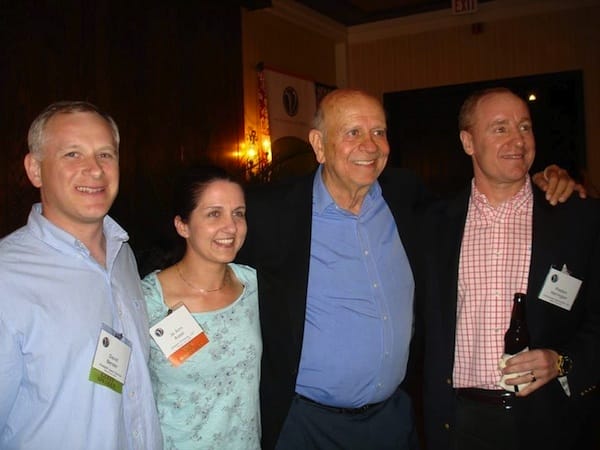
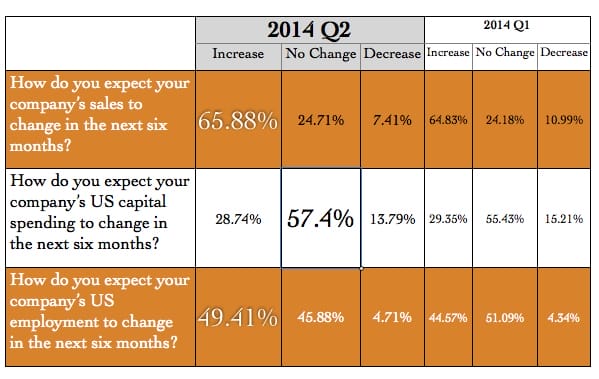

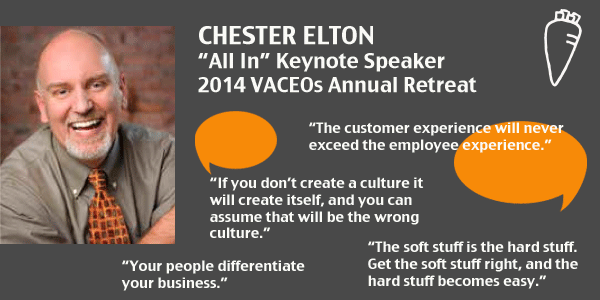

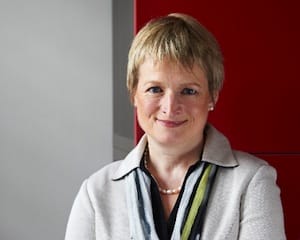
Recent Comments